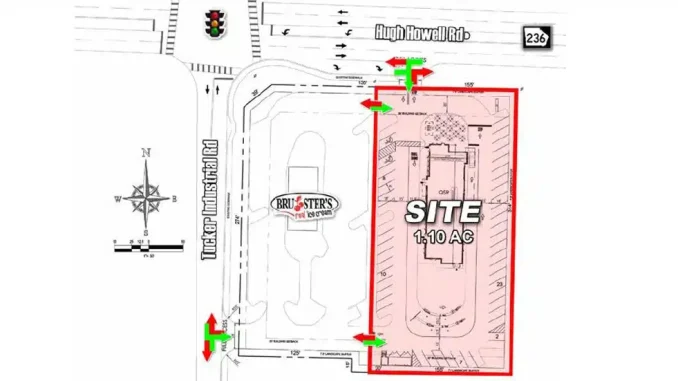

Marketing for retail land development includes selling not just a real estate location, but a vision of possibilities. Five must have’s for marketing materials for land development opportunities are as follows….
1.Define the area in discussion. Simply pointing to a property with a designated parcel size next the arrow is not enough information. Instead provide the boundary lines or a survey if your seller can provide one to you for you to utilize for your marketing efforts. Buyers, developers, and tenants need to understand the specifics of the parcel size, length, width and more to understand if the site is a possibility. Providing the information to them up front saves everyone time.
2. Zoning. Always include the zone designation on the property brochure. There can be a big difference in not only intent for the property but value of the property depending on the zone designation. Again, help make it easy for your buyers to understand if the property works for them. This will save them time and you time. If a property will most likely require a rezone for buyers intended use, let them know. The more information you can provide on the property, the better.
3. Traffic and Access. We tie these two together because the access impacts the actual amount of traffic the development can easily access. With a right in right out (R/O) any vehicles driving the opposite direction cannot easily access the property. Most national retailers require full access to their property, even if through a ring road or shopping center, possibly a three quarter access at minimum.
4. Demographics and density. Demographics and psychographics can be helpful for retailers to understand if their target consumer is in the area and if there is enough of their target consumer surrounding the property to allow for a successful location. Density can provide valuable information that allows for a retailer to understand how many locations they can have within a designated trade area or if the property in discussion is far enough away from an existing location in order to not have a negative impact on the current store. Typically each retail location will have its own designated trade area within a market.
5. Conceptual Site Plan. This is a bonus! Providing a conceptual site plan for marketing is a great way to show the possibilities of the property. Not everyone can envision a development before its there. The concept plan can also help buyers understand what may or may not fit on the property, narrowing down the possibilities of use.
